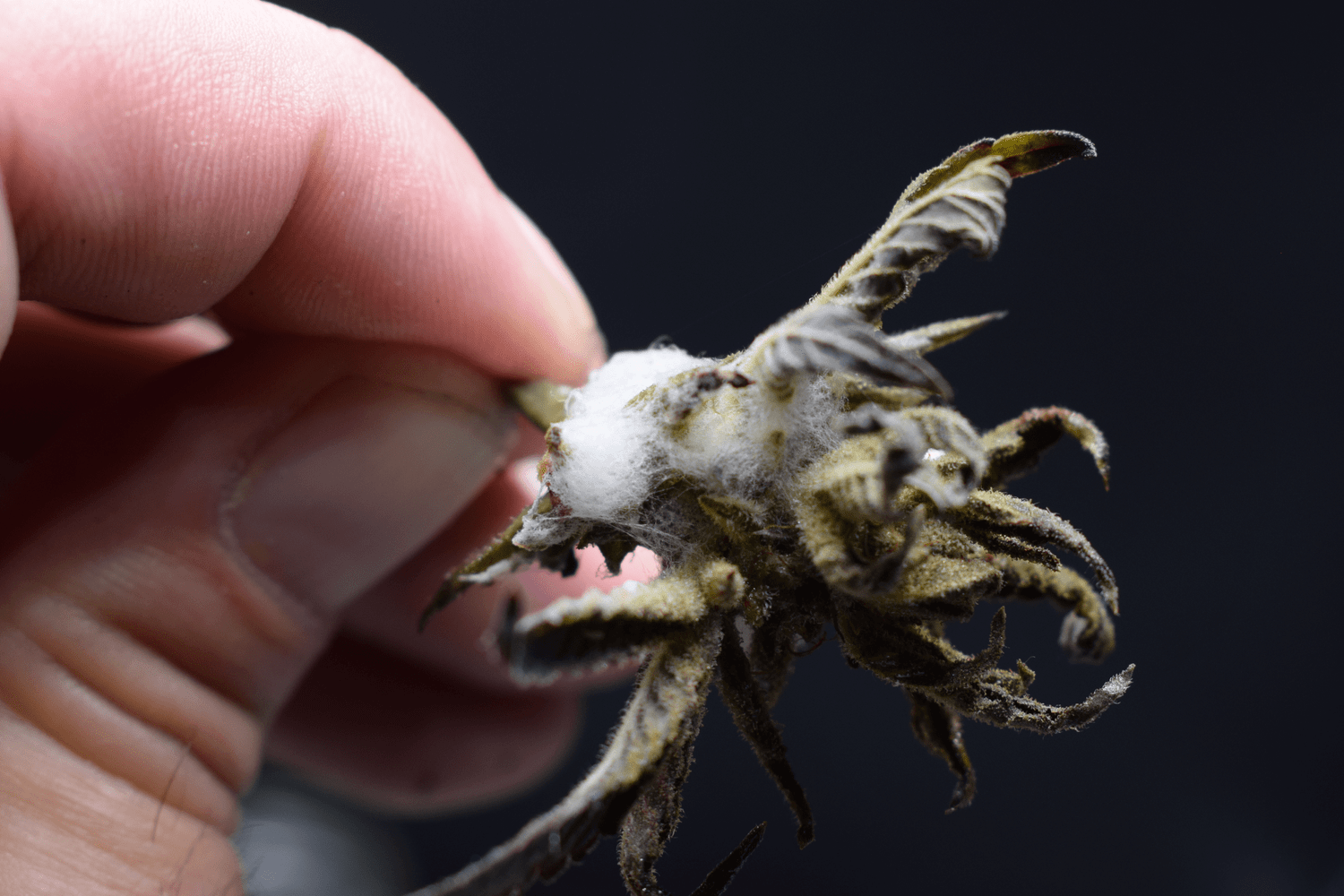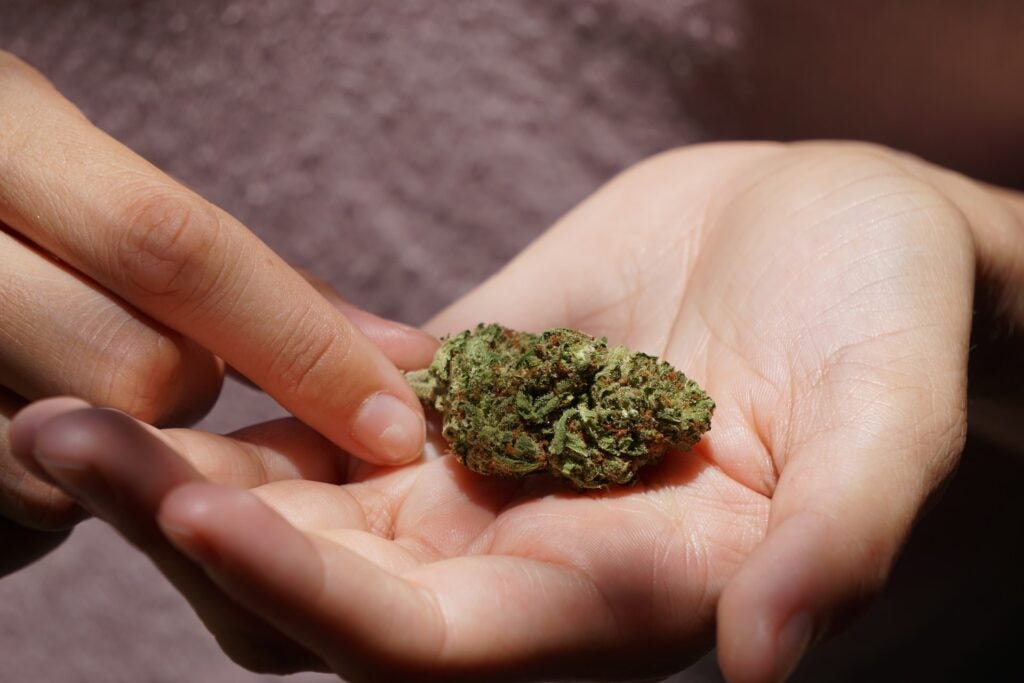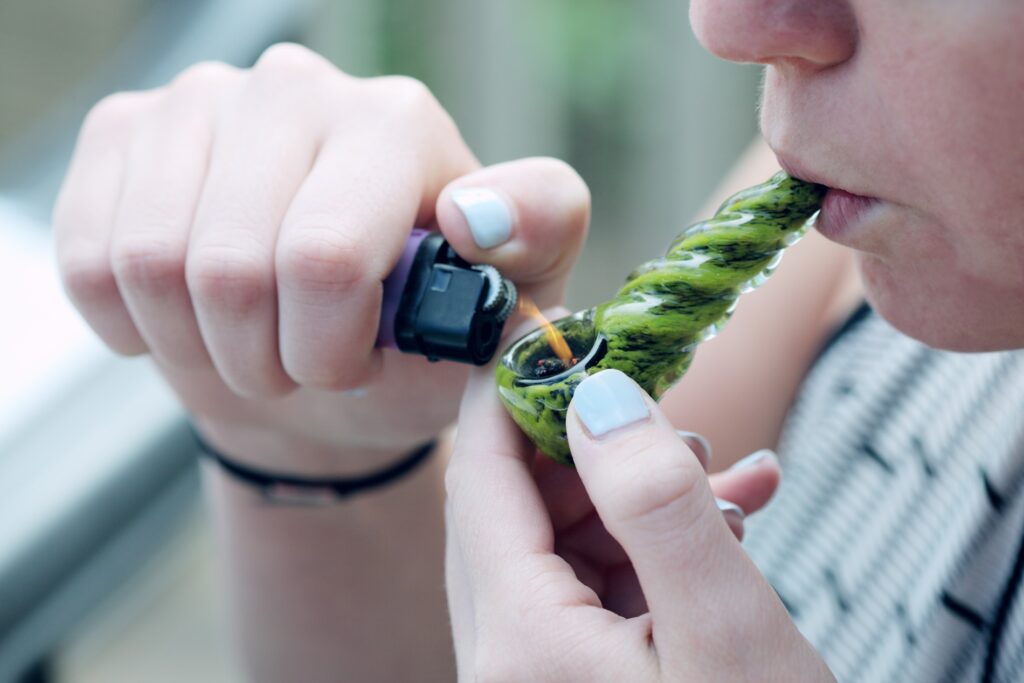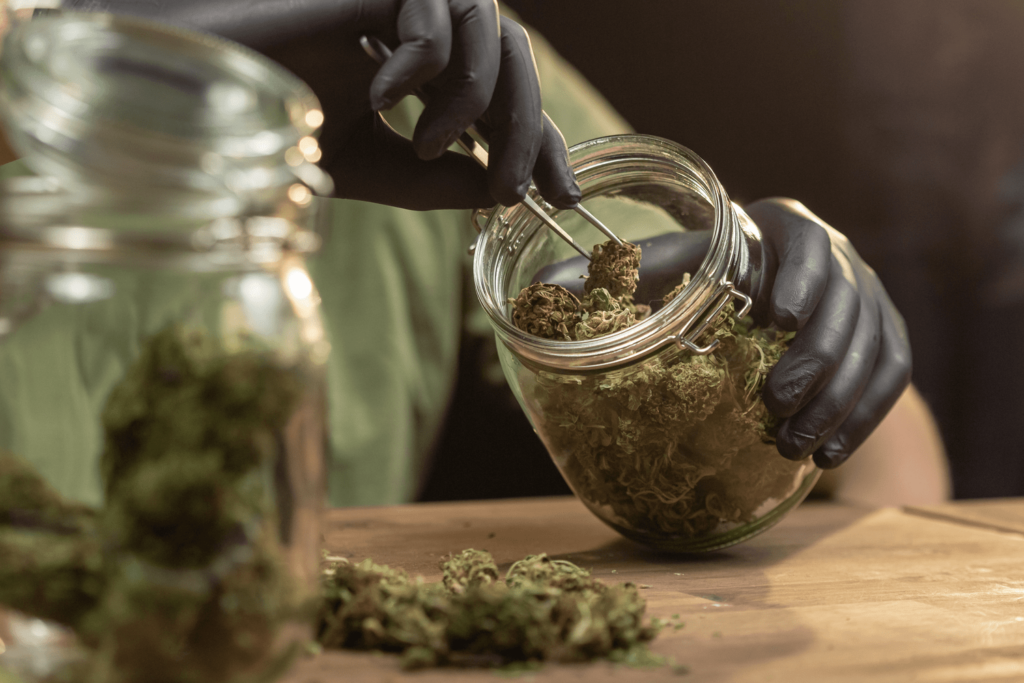- No Products In The Cart
- start shopping
Mold in My Weed: How To Identify and Is It Safe?

Mold in My Weed: How To Identify and Is It Safe?
Mold on weed is often not given the attention it should because people do not understand how it impacts their health.
When moldy weed is mentioned, sometimes, it is only in terms of how it affects the flavor, smell, and potency of the best weed strains on the market. However, a mold in your weed can lead to serious health complications with your lungs, and that’s why you need to know how to identify mold and what you should do when you find one in your precious flower.
How Does Mold Affect Your Health?
Most people that read about mold in weed do so because they have lots of questions like, is it safe? Is there a way to remove the mold? Or how do I prevent moldy weed? These and many more questions will be answered, but first, let’s consider its safety.
Regarding weed, the Botrytis cinerea (bud rot) and Aspergillus molds are the two main culprits. These molds are very harmful, but the bud rot is less severe when compared to the Aspergillus. For Aspergillus, you can be infected with aspergilloma and aspergillosis when you inhale it into your system. The symptoms are coughing, severe fatigue, and bleeding; if not handled carefully can end up being fatal.
So, there is nothing safe about having mold in your marijuana; it is very dangerous and should be avoided at all costs. This is why you should know what causes mold growth in your weed and prevent it.
What Causes Moldy Weed?
Different factors impact the growth of mold in weed, mostly the presence or absence of natural phenomena like oxygen, airflow, humidity, and temperature. So, let’s see how these factors lead to the growth of mold.
Oxygen
A mold is an aerobic organism, which means that it requires oxygen for its survival. This makes it interesting because growing weed in an enclosed environment will not work, so you cannot prevent oxygen from the cannabis plant.
Though you can use a vacuum seal to store weed for a long time, the everyday demand for weed makes it very inconvenient. Therefore, trying to mitigate mold through oxygen is futile and will yield little or no result.
High Humidity
The environment’s humidity level has the highest impact on mold growth. A humidity level above 63 percent is a perfect breeding ground for molds. An ideal combination of moisture and water is all a mold requires to grow; the exposure to light is inconsequential. Light does not increase or reduce its growth rate. However, the higher the humidity level, the faster the molds grow. Your goal is to ensure that the humidity level is higher than the threshold to keep the mold at bay.
Lack of airflow.
In some places where it is illegal to grow cannabis, people often sort to grow marijuana indoors. The challenge is that it exposes the weed to mold because molds thrive in environments with low airflow. Though some indoor cannabis farmers use fans to control the airflow, it is always better and more reliable to use the outdoor method.
The main threat of marijuana being infected by mold arises during storage and not planting; that’s why you should be mindful of how you store your weed.
Temperature
Molds thrive at the same temperature as humans, making it very dicey, just like in the oxygen factor. Since temperature is integral to the growth of cannabis, increasing or lowering the temperature might affect the plant. So, it is extremely difficult to prevent mold from growing by altering the temperature. You will have to work on the humidity and airflow to ensure that you prevent molds from growing.
What Are the Best Ways to Check for Moldy Weed?

There are different ways to identify a mold on weed; you could use your natural senses, scientific equipment (microscope), and personal research.
Look
This is the fastest and easiest way to check or identify a moldy weed. You observe the weed closely with your naked eyes to check for the signs and symptoms of mold. And these signs are:
- Powdery appearance
- Yellow fuzz
- Dark spots on green buds
- Cobweb-like material
- Slime
- Grey fuzz
The presence of any of the signs indicates that the weed contains mold.
Smell
Detecting a mold through smell can be unreliable because some people do not have a good sense of smell. So, it might be difficult for them to tell by the smell. However, an aroma of sweat or urine indicates that the weed has mold. Though, marijuana has different scents like berry, skunk, diesel fuel, etc.
So, make sure you can distinguish the aroma before making your call, but combining the smell with other methods will be better to get a more accurate diagnosis.
Feel
The normal feel of marijuana is usually dry and crispy, making it easy to identify a moldy weed by touching it. Any texture that is not dry or crispy indicates the presence of mold, especially a damp and spongy one.
You should know that using natural senses to detect molds is subject to error, so you are advised to combine all three to ensure a more accurate result.
Look Deeper
Aside from the methods highlighted above, you can also use a microscope to look deeper into the weed to find the mold at the first stage of growth before it becomes visible.
You can also use the magnifying glass jewelers use for a better view. When using this equipment, look out for any that does not have the same color as the rest of the pot plant, and that might most likely be a mold.
Check for recalls
This will require you to conduct a little research to check for any recalls on the grower’s website or media outlets. However, this might be ineffective because such cases are hardly documented or reported, making them unreliable. But it can act as a last resort when you have carried out all the other processes.
Will Moldy Weed Get You High?

The answer is yes, but it depends on the strain you are using. If you use a THC strain, you will get high due to its psychedelic effects. But other strains like high-CBD will not get you high because of the mold.
But, on a general note, some factors determine if your moldy weed will get you high. And they are;
- Your body’s tolerance to THC
- The composition of your body
- The percentage of THC in the original plant
- The quality of the parent cannabis plant that produced your bud
- The quantity of marijuana you use
- The means through which you consume the moldy weed
What Should I Do with Moldy Weed?
The best thing you can do with a moldy weed is dispose it – which is the safest thing to do. The best way of discarding moldy weed is through recycling. You can recycle it as compost to produce fertile soil for planting more cannabis.
Though you can use it for medicine and recreation, you are strongly advised against it. There are three ways in which you can recover the plant to use for entertainment and medicine, and they are as follows;
Decarboxylate
You can get rid of mold through the decarboxylating process, and using your oven is the most effective way.
Since mold cannot survive in heat above 140℉, you can set your oven to 230℉ and allow it to bake for 35 minutes. After baking, bring it out and cook it.
Whip up a batch of concentrate.
After the decarboxylating process, you can kill the remaining molds through the brewing process, as the chemicals used in the brewing process kill molds.
Filter mold with a water pipe
You can do this by loading the dabs into a dab rig and placing a water filter at the bottom, allowing it to filter out the mold. This can help take out 15 percent of the molds in the weed.
How to Avoid Moldy Weed?
People always ask, “how do I prevent moldy weed,” the answer will be provided here. To avoid molds, you can do that effectively while growing and during storage.
How to Avoid Moldy Weed While Growing?
While growing cannabis, the only way to prevent moldy weed is to control the humidity and airflow. The moisture and airflow will not be a problem for outdoor planting because there is almost nothing you can do to manage them. But, in indoor cannabis growing facility, you must ensure that the humidity level is kept low enough for the plant to grow. While also ensuring that the airflow is good, and you can do that by installing fans in the facility.
How to Avoid Moldy Weed While Storing?

When it comes to storage, you consider two things: the container and the location. If you get the right container to store your cannabis and the right place, external factors cannot influence it.
While stuffing the marijuana into the pot, ensure no space is left to prevent unwanted heat and moisture. A dark or tinted glass canning jar with a lid is the best option for the container because of its properties. It does not allow temperature fluctuations, is impermeable to oxygen, and is resistant to residual humidity. You can get it in grocery stores, the same jar used to store fruits and vegetables. But, if you cannot find the canning jar in stores, you can also go for any titanium airtight container.
For the location, you must choose a place with no direct sunlight, a humidity percentage of 59-63, and a temperature below 75℉. Any room that meets these criteria is perfect for storing cannabis, but you should use a cabinet, drawer, or cupboard. If none of these options are available for you to use, then you can make use of a black paper bag to prevent UV rays from damaging the weed.
Tips to Keep Your Weed Fresh
- Cover the weed properly to prevent light, humidity, and heat from affecting it.
- Store in a cool but not too cool place; avoid keeping it around electrical appliances and inside a refrigerator.
- Store your weed isolated from other materials, so it does not get contaminated with its aroma.
- Do not store in plastic bags.
- Store each strain separately to avoid mixing up.
Conclusion
People are advised to take many risks, but consuming a moldy weed is not one of them. The benefits against the dangers are not comparable in any way or form.
So, you must put your safety first before making any decision.
This article has clarified how to prevent molds from affecting your weed and the bests ways to store them.
Source
https://www.thefiltery.com/moldy-weed/https://honestmarijuana.com/moldy-weed/
